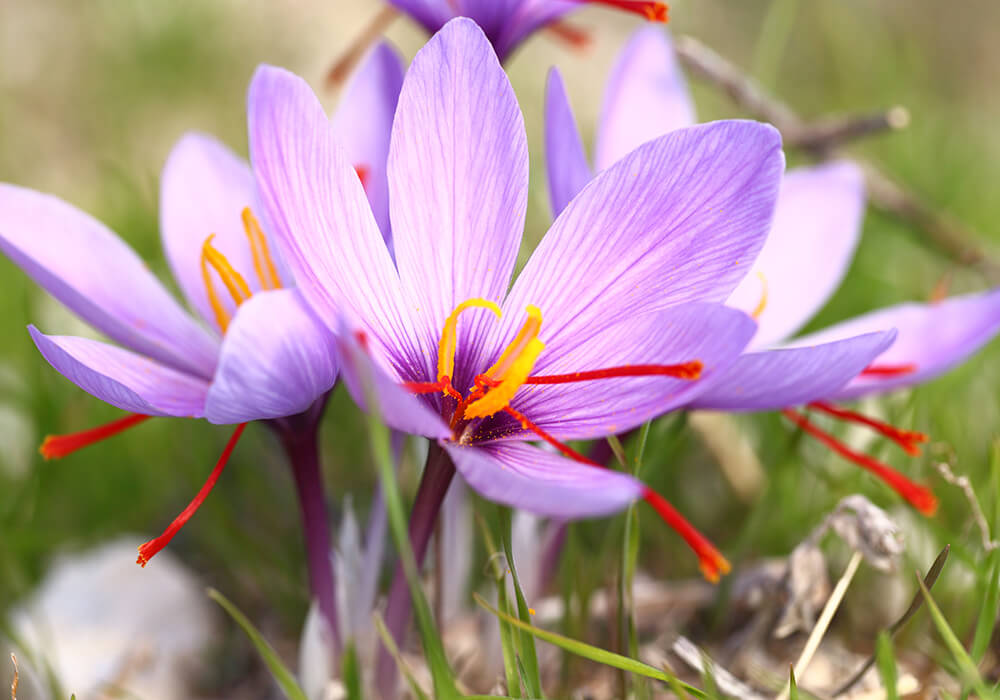Part I
Cultivating Proper Conditions
Step 1
Purchase crocus corms from nurseries nearby or online. The purple-flowered saffron plant grows from the crocus corm (which is analogous to a bulb). The best is to purchase the fresh corms, just before planting. Crocus corms will grow best in hot and dry climates, with a hardiness zone of 6-9.
Step 2
Find a preferrable planting location with well-draining soil and full sun. probe the soil to form sure that it’s not too hard or packed too tightly. Crocus bulbs can die if they become waterlogged, so you would like soil that drains effectively.
Step 3
Prepare the soil with organic matter. Till the situation where you’ll plant your corms, dig about 10 inches (25 cm) deep into the soil. you’ll use compost, peat, or shredded leaves. This will provide nutrients and other needed ingredients for the crocus bulbs to survive through the winter.
Step 4
Plant your corms in containers as an alternate. If rodents or other pests are a standard problem in your garden, planting in containers could be an honest option for you. Be sure to settle on a container with drainage holes or add them if it doesn’t have any.
Step 5
Plant your crocus corms before the bottom freezes. For best results, you ought to plant your corms 6-8 weeks before the primary deep frost of the season. counting on your climate (and hemisphere), this might be around October or November.
Part II
Planting Your Corms
Step 6
Place your crocus corms in clusters. instead of planting them in rows, your crocus flowers will grow better in clusters. Plant it approximately 3 inches (7.6 cm) aside from each other, and cluster them in groups of 10-12.
Step 7
Plant the corms 3–4 inches (7.6–10.2 cm) deep. Position each corm with the sharp find yourself, and place 1 corm in each hole. Cover each bulb with soil. If using containers for planting, place your corm on top of the 5 inches (13 cm) of soil you already added to the container. Then cover your it with 2 inches (5.1 cm) of soil on top.
Step 8
Water your corms through the autumn. Autumn is that the season for your crocus corms. During this point, it’s important to stay the soil moist, but not waterlogged. Water your corms 1-2 times per week. Several times every week, insert 2 fingers into the soil to measure the moistness. If there’s standing water quite each day after watering, begin watering just one occasion every week. If your soil is totally dry (not moist) within each day, begin watering 3 times per week.
Step 9
Apply fertilizer once per season. If you reside in a neighborhood with a brief, warm spring, apply fertilizer to your corms within the early fall. If you reside in a neighborhood with an extended, temperate spring, apply fertilizer to your bulbs right after they flower. this may help your crocus corms build up a robust store of carbohydrates to assist them survive into subsequent year.
Part III
Harvesting Saffron
Step 10
Be patient. Crocus flowers are easy to cultivate. they’re naturally hardy, and naturally immune to insects and disease. the matter is that every corm will only produce 1 flower, and every flower will only produce 3 saffron stigmas. At the top of your harvest, you’ll only finish up with a small little bit of usable saffron
Although crocus flowers should appear 6-8 weeks after planting your bulbs, sometimes the flowers won’t appear until the subsequent fall, a full year after you plant your bulbs.
In some cases, planting in spring can produce blooms within the fall.
Step 11
Pluck the stigmas from each crocus flower. within the center of every purple crocus flower, you ought to find 3 orange-red stigmas. await a sunny day when the flowers are fully open, and punctiliously remove these stigmas from each of your crocus blooms using your fingers.
Step 12
Dry and store your saffron. Once you’ve got carefully removed all of the saffron stigmas, lay them out on paper towels during a warm, dry place. Leave them alone for 1-3 days until they’re completely dry.
Dried saffron should be kept during a cool, dry place. You can store saffron in an airtight container for up to five years. Use saffron in recipes. when you use your saffron, steep the dried stigmas in hot liquid (such as milk, water, or broth) for 15-20 minutes. Add the liquid and the stigmas to your recipe. Saffron are often used for rice, soups, sauces, potatoes, food , and other dishes. Adding the stigmas along side the liquid allows them to release more color and flavor into your food.

